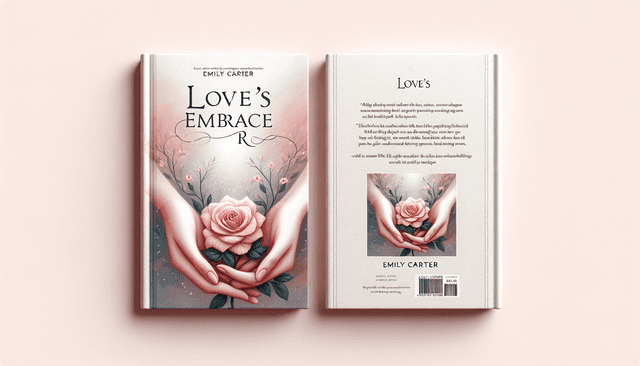Table of Contents
So, you’re dreaming of becoming a published author, but the whole agent thing feels like a maze, right? You’re not alone—many aspiring writers share the struggle of navigating the publishing landscape without the backing of an agent. It can seem daunting when there’s so much advice flying around.
But here’s the good news: You can turn that dream into reality! Stick around, and I’ll share practical steps to get your book published on your terms—agent-free! You’ll find the insights you need to take charge of your writing journey.
From choosing the right publishing method to marketing your masterpiece, we’ll cover everything you need to know to get your book out there and into readers’ hands. Let’s dive in!
Key Takeaways
- Decide between self-publishing and traditional publishing based on your need for creative control or distribution support.
- Edit and polish your manuscript thoroughly, and consider hiring a professional editor to enhance quality.
- Seek feedback from beta readers to identify areas for improvement in your manuscript.
- Create an eye-catching book cover that represents your genre and hire a professional designer if possible.
- Choose the right publishing platform like Amazon KDP, IngramSpark, or Lulu for your distribution needs.
- Understand ISBNs and copyright to protect your work and facilitate sales.
- Register your copyright to strengthen legal ownership and prevent unauthorized use of your content.

Choose the Right Publishing Option
Before you dive into the actual publishing process, it’s crucial to decide which publishing option fits your needs best.
There are mainly two avenues: self-publishing or traditional publishing. Each comes with its unique benefits and challenges.
Self-Publishing vs. Traditional Publishing
In self-publishing, you take on the role of the publisher. This means more control and potentially higher profits, but also more responsibility.
On the other hand, traditional publishing usually offers an established distribution network and editorial support, but it comes with less creative control.
Evaluate what’s more important for you: creative freedom or the backing of a publishing house.
Pros and Cons of Each Method
Self-publishing gives you complete control of the process. You can set your timelines and own the rights to your work.
However, you’ll also shoulder the costs of production and marketing, which can add up quickly.
Traditional publishing can give your book more credibility and access to a larger audience through established bookstores.
But then there’s the waiting game; securing a deal can take a long time, and even once published, your royalties can be significantly lower.
Ultimately, weigh your priorities: Are you more interested in creative control or reader reach?
Prepare Your Manuscript
Once you’ve chosen your route, the next step is to prepare your manuscript. A polished piece of writing is essential for either path.
Edit and Revise Your Work
The editing process is your chance to refine your story. Start by self-editing. Take a break after finishing your draft so you can approach it with fresh eyes.
Look for inconsistencies in the plot, character development, and pacing. Consider making separate passes for grammar, style, and content.
Hiring a professional editor can significantly elevate your manuscript. They can catch mistakes you might have missed and offer constructive criticism.
Get Feedback from Beta Readers
Once you feel your manuscript is solid, it’s time for beta readers. These are people who will read your book before it’s published and provide honest feedback.
Consider forming a critique group or seeking out beta readers from writing communities online.
Make sure to ask for specific feedback so you know which areas to focus on for improvement.
Format Your Manuscript Properly
Proper formatting can make or break your manuscript’s chances. Different publishing platforms have specific guidelines.
For self-publishing, you’ll need to format the document for eBook and print versions. Programs like Scrivener or templates from sites like Reedsy can help with this.
Check that your manuscript has standard elements like a title page, table of contents, and page numbers. This makes it more professional and easier to read.

Design an Eye-Catching Book Cover
Your book cover is your first impression, so you need to make it count.
An eye-catching cover can attract potential readers and convey the essence of your story.
Hire a Professional Designer
Hiring a professional can take your book cover from amateur to stunning.
Freelance platforms like Fiverr or Upwork host many talented designers who specialize in book covers.
Before selecting a designer, check their portfolio to see if their style aligns with your vision.
Be clear about what you’re looking for and provide them with essential details about your book, including genre, themes, and target audience.
Understand Cover Design Basics
Even if you hire a designer, understanding cover design basics can elevate your discussions.
Your cover should reflect the genre; a romance novel, for example, might have a softer, more inviting design.
Important elements include a compelling title, author name, and a captivating image that grabs attention.
Use legible fonts and ensure the text contrasts well with the background for better readability.
Consider testing different cover designs with friends or your beta readers to see which resonates the most.
Find the Right Publishing Platform
Your choice of publishing platform can significantly impact your book’s success.
It’s essential to explore your options thoroughly to find the best fit.
Popular Self-Publishing Platforms
Some of the most popular platforms include Amazon Kindle Direct Publishing, IngramSpark, and Lulu.
Amazon KDP is an industry leader, allowing you to publish both eBooks and paperback formats, with broad global reach.
IngramSpark is great if you’re looking for extensive distribution to bookstores and libraries.
Lulu is often recommended for print-on-demand services, offering various print options.
Research the royalty structures and fully understand each platform’s terms before committing.
Choosing the Right Format (eBook, Print, Audiobook)
Deciding on the format is crucial as it affects your reach and reader experience.
eBooks are convenient for readers and have low distribution costs, making them a popular choice.
Print books can attract readers who love the feel of a physical book and give a more substantial presence in bookstores.
Consider audiobooks, which are growing in popularity; they can broaden your audience, especially among those who prefer listening over reading.
Choose formats that align with your goals and your target audience’s preferences.
Get an ISBN and Copyright
Understanding ISBNs and copyright is paramount for protecting your work and enhancing sales.
Understanding ISBNs
An ISBN (International Standard Book Number) is your book’s unique identifier.
It’s crucial for print and eBooks as it helps booksellers, libraries, and publishers keep track of your title.
You can purchase an ISBN from Bowker in the U.S. or from your country’s ISBN agency.
While some self-publishing platforms offer free ISBNs, it’s often better to buy your own; this way, you retain full rights and control over your book.
How to Register Copyright for Your Work
Copyright protects your creative work from being copied without your permission.
In the U.S., you can register your copyright through the U.S. Copyright Office.
While your work is automatically copyrighted upon creation, registering provides legal benefits, making it easier to prove ownership in disputes.
Gather necessary documents, fill out the application online, and pay the fee to complete your registration.
Registering copyright for your work is a small investment for significant peace of mind.

Market Your Book Effectively
Marketing your book is crucial to its success.
Even the best-written book might go unnoticed without a solid marketing strategy.
Build a Social Media Presence
Social media platforms are a powerful way to connect with readers and promote your book.
Start by choosing platforms where your target audience hangs out, like Instagram, Twitter, or Facebook.
Create an author profile and regularly share engaging content related to your book, writing process, or the genre you write in.
Consider using tools like Canva to create visually appealing posts.
Engage with your followers by asking questions, seeking their opinions, and responding to comments.
Connect with Potential Readers
Connecting with readers can help you build a loyal following.
Consider hosting virtual book readings or Q&A sessions on platforms like Zoom or Instagram Live.
Join online communities or forums related to your genre where you can share your experiences, answer questions, and promote your book when appropriate.
Collaboration with other authors through guest blogging or social media takeovers can also expand your audience.
Utilize Book Promotion Services
Book promotion services can give your marketing efforts a significant boost.
Consider platforms like BookBub, which helps promote eBooks to their large subscriber base.
Look for websites that offer free or discounted promotions for your book, and schedule them strategically during your launch period or special sales events.
Monitor the effectiveness of various promotion services to see which yields the best results for your specific book and audience.
Distribute Your Book
Distribution is key to making sure your book reaches readers.
Think about where your potential readers shop for books, whether online or in physical stores.
Set Up Distribution Channels
Setting up the right distribution channels can expand your book’s reach.
For self-publishing, consider using Amazon’s KDP, which allows you to sell eBooks and paperbacks directly on Amazon.
Explore other online retailers like Smashwords or Draft2Digital for broader distribution to multiple platforms.
If you’re going for print, check out services like IngramSpark to distribute your print book to bookstores and libraries.
Sell Directly to Readers
Selling directly to readers can help you keep a larger percentage of your sales.
Set up a website where readers can purchase your book directly.
Using platforms like Shopify or BigCommerce can simplify the process.
Offer exclusive content or special deals for direct buyers to encourage sales.
Consider using email marketing to reach subscribers about your book launch and promotions directly.
Monitor and Adjust Your Marketing Strategy
Once your book is out there, it’s important to keep an eye on how it’s performing.
What worked in the beginning might not continue to work, so remain adaptable.
Track Sales and Reader Feedback
Monitoring sales is vital to understand your book’s success.
Utilize tools provided by your publishing platform to track sales data regularly.
Encourage readers to leave reviews on platforms like Amazon or Goodreads, as this feedback can guide your marketing.
Consider running surveys to collect detailed reader feedback, which can help you improve your future writing and marketing efforts.
Make Adjustments Based on Results
Be prepared to tweak your marketing strategy based on what you learn from sales and feedback.
For instance, if a particular social media ad works exceedingly well, consider investing more effort there.
On the flip side, if certain promotions aren’t bringing in sales, don’t hesitate to cut them.
Keeping your marketing strategy fluid helps you adapt to the ever-changing landscape in book publishing.
Stay tuned to industry trends and prepare to pivot as necessary to maximize your book’s impact.
FAQs
Self-publishing gives you full control and a higher royalty rate but requires more effort in marketing and distribution. Traditional publishing offers professional support and wider distribution, but often requires an agent and provides lower royalties.
Formatting typically includes setting proper margins, using a standard font, and adhering to specific guidelines provided by your chosen publishing platform. It’s essential to create a professionally formatted file to ensure readability and compliance.
Yes, obtaining an ISBN is essential for self-published books as it uniquely identifies your title and helps with distribution. Many self-publishing platforms offer free or purchasable ISBNs, or you can buy one directly from an ISBN agency.
Effective marketing involves building a strong social media presence, engaging with potential readers, leveraging book promotion services, and gathering reviews. Participating in book fairs and author events can also boost exposure and sales.



